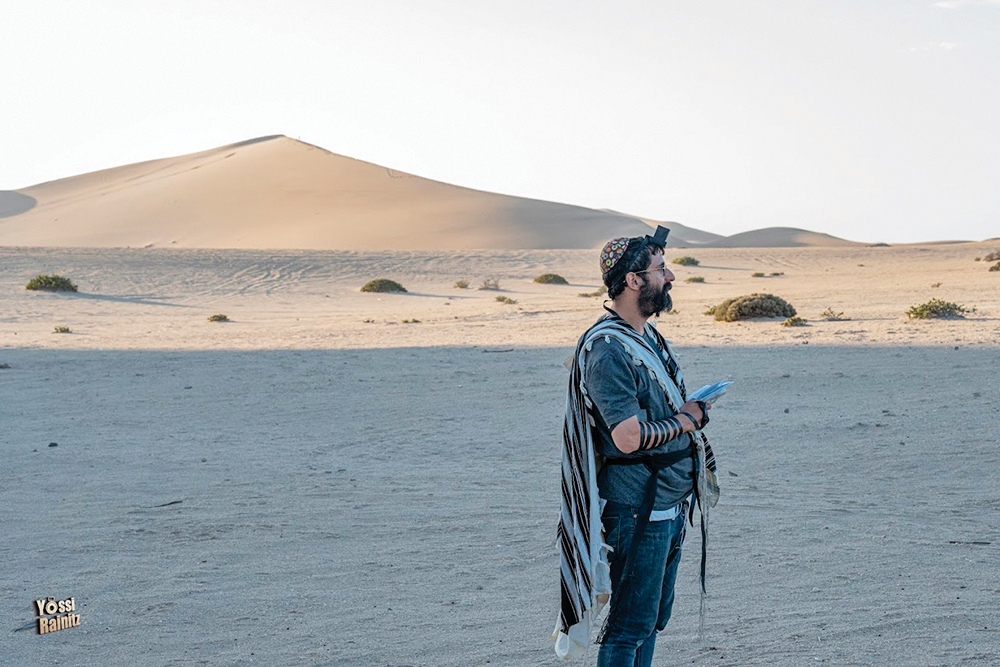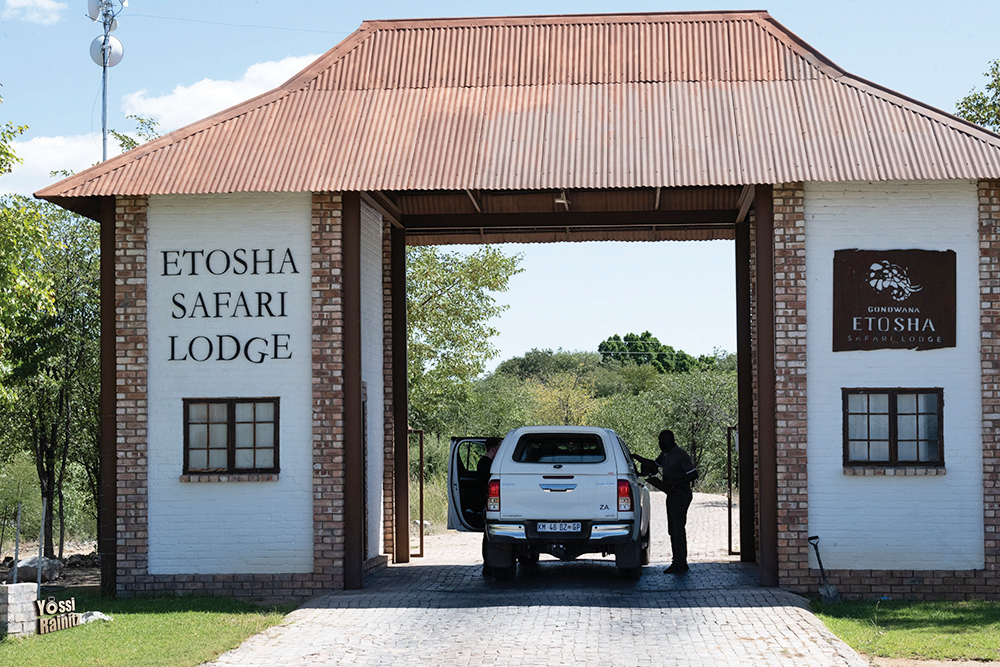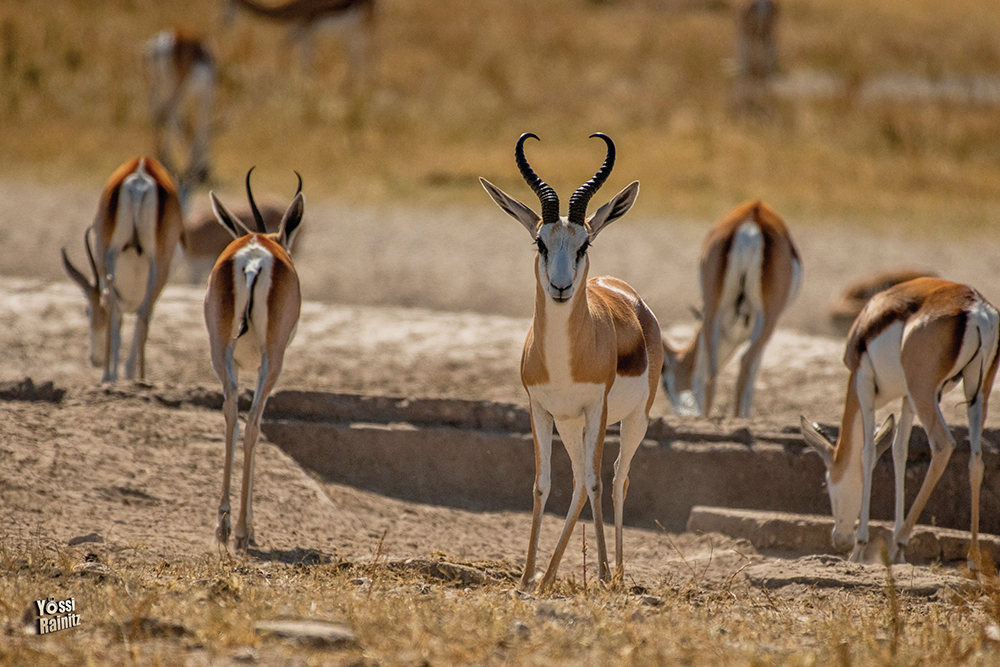
Officially named the Republic of Namibia, Namibia is a country in Southern Africa. It’s western border is the Atlantic Ocean and it shares borders with Angola and Zambia to the north, Botswana to the east and South Africa to the east and south. Distinguished by the Namib Desert along its Atlantic Ocean coast, Namibia is home to diverse wildlife. And Namibia is home to one of the world’s most isolated Jewish communities.
Most of the Jews in Namibia live in the capital city of Windhoek, and there is also a concentration of Jews in the city of Swakopmund. “In the past, there was a large Jewish population in Namibia,” said Rabbi Yosef Rahimi of Chabad of Namibia. “The ancient synagogue, located in the city of Windhoek, was established over 100 years ago, but now it is closed for renovations. In the future, it will become a museum covering Judaism in Namibia. We are now working on buying land to build the first mikvah tahara in Namibia.”

Rabbi Rahimi studied in Chabad yeshivot in Israel and afterwards studied for three years at the Lubavitch yeshiva in New York City, where he received semicha. It was after helping in the Chabad House in New Delhi, India that he realized he wanted to help people in any place that he might be needed. And it was after Rahimi’s wife, Mushka, whose parents are Chabad shluchim in Tel Aviv in the Florentine neighborhood, completed her bachelor’s degree in education and after the birth of the Rahimi’s first daughter that the Rahimis found themselves looking for a new place to open a Chabad House.
It was then that Rabbi Rahimi first heard the word “Namibia.” “For me, it was the first time in my life to hear about the country and the style there. We wrote to the Rebbe through the Agrot Kodesh. We asked our question: ‘Is this place and country, this mission, for us?’ The answer came back: ‘Have a good trip.’” And so the Rahimis arrived in Namibia with six suitcases and some kosher food for the first few days, establishing the Chabad House in Namibia in 2021. They learned that there was a small Jewish community and also some travelers in the country. “We were told that there were about 40 to 50 Jews. At the moment we already have around 150 Jews that we know,” the rabbi said.

All Jewish prayers, holidays and events take place at the Chabad House in Windhoek. Kosher food can be purchased from Chabad catering. The kosher food is based on local produce. The availability of kosher meat and poultry must be checked in advance, and other quality products are available from South Africa, Israel and the United States. Kosher breads must be ordered in advance, and milk can be purchased from Chabad. There are several nearby hotels within walking distance from the Chabad House, convenient for the frum visitor on Shabbat and holidays.
While visiting Namibia, people can explore many unique sites and unexpected places. Rabbi Rahimi can help visitors with recommendations for tours and sightseeing with Archie van der Merwe, owner of Amazing 5 Tours Namibia. He explained why Namibia is so special. “Namibia is a country with thousands of miles to drive and a lot to see. It is a huge country, approximately 1,600 kilometers (994 miles) in length and 600 kilometers (372.8 miles) wide. What makes Namibia special is that the landscape changes every 50 kilometers (31.0686 miles). Almost 30% of Namibia is desert and 60% farmland.”

Van der Merwe continued: “Three important places to see are the main tourist destinations … Etosha Game Park, home to Namibia’s wildlife; Sossusvlei Dunes; and Swakopmund. The visitor to Namibia can arrange a 10-day to two-week tour to these destinations. Sossusvlei Dunes is a place where a river just stops in the middle of the desert. With beautiful dunes, this is a photographer’s dream. A must visit, close to this site is the Deadvlei, which is a big open pan with lots of old, dead trees. On the way to Sossus is a canyon called Sesriem, which fills with water during the rainy season but most of the time is dry. From Sossusvlei you can visit the Fish River Canyon, which is the second-biggest canyon in the world.”
After visiting Sossus, most visitors go to Swakopmund, a beautiful town surrounded by dunes that has a German history, with many old buildings and traditional places to visit. Here the visitor can participate in a variety of activities. Most popular are dune buggies and boat tours to seal colonies with 2 million seals, of which 50,000 are close to Swakopmund.
From Swakopmund, the next stop is Etosha, a very large natural game reserve with millions of wild animals such as elephants, rhinos, lions, cheetahs, giraffes and a large variety of antelopes. There are three camps in Etosha for lodging and camping. Around Etosha there are also many lodges where visitors can stay and take day visits to Etosha. Between all of these destinations are a variety of small game reserves and lodges where visitors can stay overnight.

As van der Merwe said, “Namibia is all about traveling, slow driving and enjoying the scenery.”
For more information: chabadnamibia.com, office@chabadnamibia.com
WhatsApp: +264.81.675.6951
Amazing 5 Tours: https://www.amazing5tours.com/
Email: bookings@amazing5tours.com
Susan R. Eisenstein is a longtime Jewish educator, passionate about creating special, innovative activities for her students. She is also passionate about writing about Jewish topics and about Israel. She has two master’s degrees and a doctorate in education from Columbia University.








